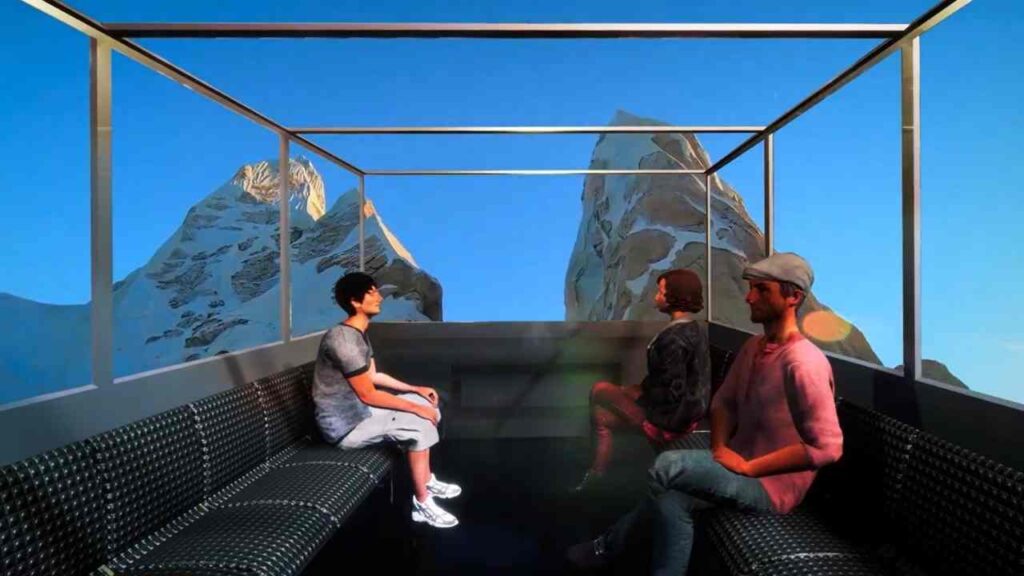In an interview with TechGraph, Saurav Bhaik, Founder & CEO of Tagbin discusses how Tagbin is redefining the museums and tourism industry through virtual reality and its teleportation bus.
Read the complete interview:
TechGraph: How does the Tagbin Teleportation Bus leverage immersive technology to enhance visitor experiences in digital museums and historical landmarks?
Saurav Bhaik: The Tagbin Teleportation Bus transports passengers outside of space and time, opening doors to infinite possibilities and elevating visitor experiences in digital museums and historical landmarks. Group VR, the system used to build the virtual bus experience, offers panoramic views on all four sides, including the sunroof. Visitors are completely immersed in the alluring visual and auditory environment created by the bus. The bus serves as a platform for cross-cultural communication, enabling individuals to embrace various traditions and cross geographical boundaries.

TechGraph: Could you elaborate on the physics engine and real-time network integration used in the Tagbin Teleportation Bus? How does this technology synchronize physical bus movement with a virtual environment?
Saurav Bhaik: The Tagbin Teleportation Bus has a built-in physics engine that simulates the virtual environment while adhering to physical laws like gravity, collisions, and forces like wind or friction. The virtual world becomes more realistic, improving passengers’ overall experience. Sensor data collection is critical for synchronizing the physical bus’s movement with the virtual environment.
The bus’s position and motion in the real world are monitored by several sensors, including cameras, lidar, and movement sensors. Real-time data is then streamed to the virtual environment, where a virtual representation of the bus is presented. The streamed data guarantees a seamless alignment of virtual content with the simulated environment by accurately synchronizing the virtual and physical buses, resulting in an immersive experience where the virtual and real worlds are intricately intertwined.

TechGraph: With the Tagbin Teleportation Bus offering an unmatched level of authenticity and engagement, how do you ensure accuracy and attention to detail in recreating historical landmarks and cultural hotspots within the virtual journeys?
Saurav Bhaik: Several steps must be taken to accurately recreate famous historical sites or popular tourist attractions in a virtual setting. The first step is for a team to perform lidar scans at the actual site, which create precise 3D models of the surroundings and record precise geometry and architectural data. This information is transformed into a point cloud, which serves as the basis for virtual recreation. In addition, high-resolution images from various angles are captured to capture textures and visual nuances.
These pictures serve as a guide for portraying the site’s appearance accurately. To ensure authenticity, historical research is done in conjunction with subject-matter experts and by examining pertinent sources. This entails looking at historical documents, architectural specifics, cultural norms, and background data.
A virtual journey with rich details and cultural significance is produced using the gathered data in conjunction with historical knowledge. To faithfully reproduce the site’s visual appearance and give users an engaging and visually stunning experience, sophisticated rendering techniques and graphic design are used to create photo-realistic scenes.
TechGraph: How do you see the Tagbin Teleportation Bus transforming the educational sector, particularly in terms of providing virtual field trips and experiential learning opportunities?
Saurav Bhaik: The advent of the Tagbin Teleportation Bus marks a remarkable transformation in the educational sector, introducing a dynamic approach to learning that transcends traditional classrooms. By offering virtual field trips and experiential learning opportunities, this innovative bus has the potential to revolutionize education in numerous ways.
Firstly, the Tagbin Teleportation Bus enables students to embark on virtual field trips to virtually any location around the globe. This includes ancient ruins like Vadnagar and natural wonders like the Great Barrier Reef. Through immersive virtual reality experiences, students can explore these destinations as if they were physically present. This will enable them to gain an in-depth understanding of different cultures, historical contexts, and ecological systems. This eliminates geographical and financial constraints. This ensures that all students, regardless of their background or location, have equal access to these enriching educational experiences.
Moreover, the bus facilitates experiential learning by creating a multi-sensory environment that engages students on multiple levels. Instead of relying solely on textbooks and lectures, students can actively improve their learning process by interacting with the virtual environments presented within the bus. They can touch, see, and hear their surroundings, fostering a deeper connection and comprehension of the subject matter. This experiential approach sparks curiosity, promotes critical thinking, and enhances long-term knowledge retention.
TechGraph: Apart from the tourism and educational sectors, how do you envision the Tagbin Teleportation Bus being utilized for entertainment, wellness, team-building, and therapy purposes?
Saurav Bhaik: Beyond tourism and education, the Tagbin Teleportation Bus offers a wide range of opportunities for entertainment, wellness, team-building, and therapeutic purposes. The bus transforms into an effective tool for virtual exposure therapy in the context of therapy and rehabilitation. This allows patients to face and overcome fears, anxieties, and traumas in a safe and encouraging environment. It can also serve as a haven for relaxation and rejuvenation by simulating tranquil natural settings.
Moreover, the bus offers visitors immersive virtual worlds where they can participate in extraordinary adventures and have interactive experiences that extend beyond traditional gaming. The bus can also be used as a setting for team-building exercises, enabling groups to work together, solve problems creatively, and foster camaraderie in fun virtual environments.





